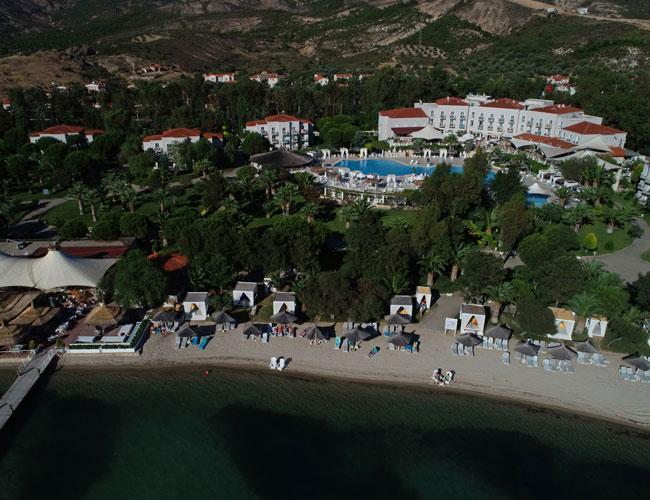
With a significant increase in the number of both local and foreign travelers, occupancy rates have reached almost 100 percent in Turkish hotels, according to sector players.
In the first five months of the year, more than 11.5 million tourists visited Turkey, with the number of arrivals from Russia and the United Kingdom soaring. In addition to this, local holidaymakers have started to take vacations by the end of June as the June 24 elections were over, the national university entrance exam was completed, and schools were closed for the summer holiday.
“We have seen an enormous demand right now for our hotels, especially in the Mediterranean resort of Antalya and Istanbul. They were followed by hotels in the Aegean region, which is very popular among local holidaymakers especially after the July 24 elections and the university entrance exam,” said Turkish Hoteliers Federation (TÜROFED) head Osman Ayık.
In an interview with state-run Anadolu Agency on July 5, Ayık added that there was a very high demand from Russia and the U.K.
“Antalya will likely end this year with 14 million tourists,” he noted, adding that Turkish hotels hit almost 100 percent occupancy rates across the country now, even in the Black Sea region, which is a more popular in spring than in summer months.
The annual Thomas Cook Holiday Report recently revealed that Turkey is re-establishing itself as a go-to summer destination for Brits, with the holiday hotspot making an impressive comeback in 2018 after a downturn in recent years.
Turkey is outselling both Spain and the Canary Islands combined for bookings, thanks to the competitive prices and brilliant all-inclusive resorts it offers, the report stated in April.
Tour operators in May said there was a 80 percent increase in Brits’ bookings for Turkish hotels.
After having seen a decreasing demand from many Western and northern European markets, Turkey is back in fashion in summer season and has become the third most popular destination after Spain and Greece, Anglo-German travel and tourism company TUI has also recently stated.
Turkey has become especially popular among German, Austrian, Dutch, Swiss, Danish and Polish holidaymaker, according to TUI holiday atlas, which was released in June.
Amid a series of bomb attacks, a failed coup attempt and a diplomatic crisis with Russia, the number of foreign tourists visiting Turkey plummeted to 25.3 million in 2016, down from 36.2 million in the previous year. Nearly 36.8 million foreigners visited Turkey in 2014.
The negativities slashed Turkey’s tourism revenue in 2016 to $22.1 billion, down from $31.4 billion in 2015.
Tourism revenue rose to $26.3 billion in 2017 with a nearly 19 percent year-on-year increase, driven by a significant rebound in the number of foreign arrivals. Foreign tourist arrivals have continued significantly in 2018.
Turkey’s tourism revenue hit $34.4 billion in 2014.
Ayık said the tourism revenue was still lower than the heyday in 2014, despite the dramatic rise in tourist arrivals.
“We need to maintain a healthier supply and demand curve. It is now time for use to recover the losses that we have witnessed in the last couple of years,” he added.
Turkey’s Tour Operators Platform President Cem Polatoğlu told Anadolu Agency that Turkish hotels would likely keep enjoying 100 percent of occupancy rates in July and August.
“Even in September, the occupancy rates will be 80 percent, which is very high compared to previous years,” he said.